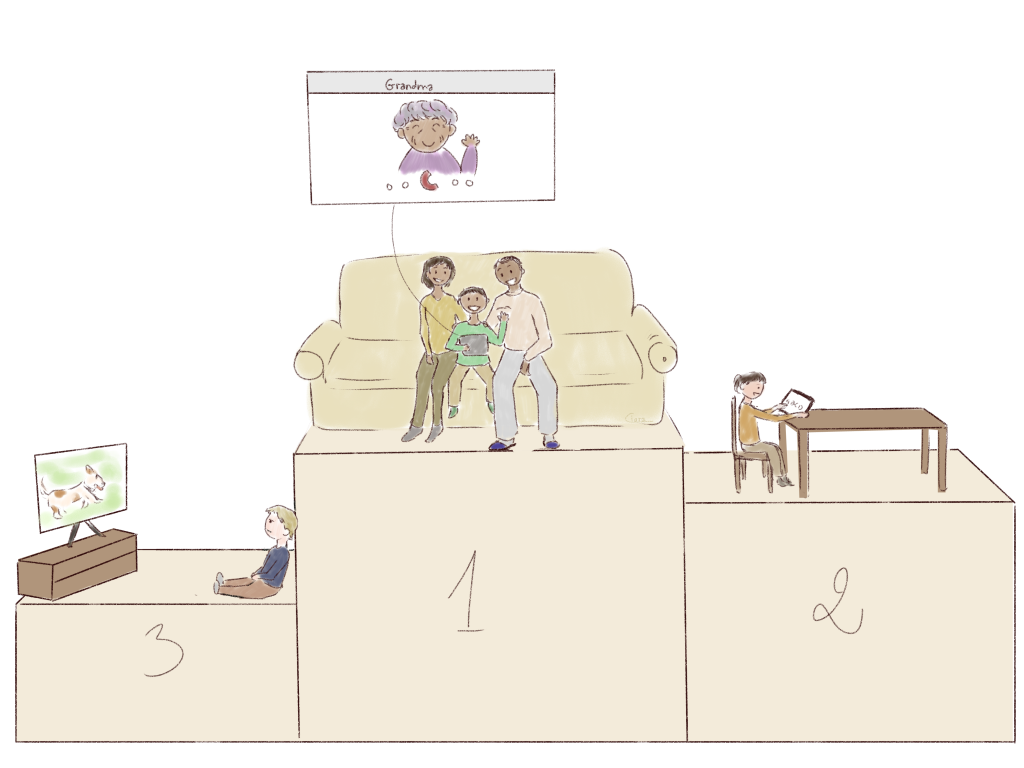The best screens of 2020

Our modern lives are packed with screens galore, phones in our hands, computers in our offices, ads in the subway. In fact, you are looking at one right now!
Some screens are only there to be looked at, but others need to be engaged with, like video games or video chatting.
Interaction is key for language learning, so, as you can imagine, the more interactive the screen the better it is for your child’s language development. Here, we will rank screens from best to worst for learning.
Gold: Videotelephony (video chatting software)
Live interaction over a screen is almost just as good for language learning as face-to-face interaction. So schedule in that Saturday with grandma-on-screen! What a relief during these pandemic times.
Silver: Interactive software
E-books, interactive apps, video games, all react to a child’s actions. This machine-child interaction can also foster learning, at least later in toddlerhood. Of course, content is essential (see previous comic)!
Bronze: Film (television, videos, movies)
On its own, watching television or videos involves no interaction, and so it is not the best tool for learning, at least early in toddlerhood.
There is no need (and is it even possible?) to go cold turkey on screens. It is important to recognize the sheer variety of screens out there and to choose those that create favorable learning environments, with lots of interaction with others and the world.
The scientific sources for our comics:
Roseberry, S., Hirsh‐Pasek, K., & Golinkoff, R. M. (2014). Skype me! Socially contingent interactions help toddlers learn language. Child Development, 85(3), 956-970.
